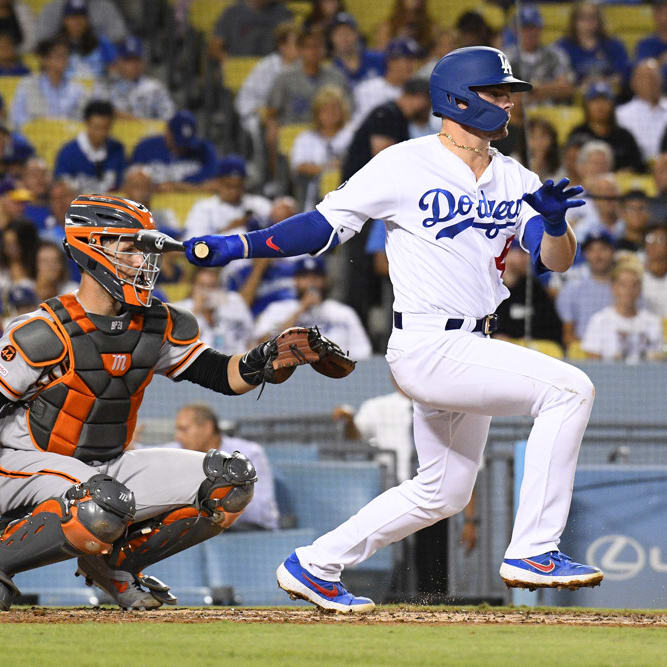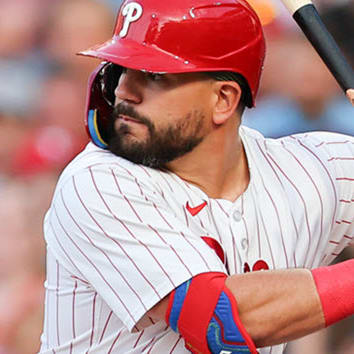Cody Allen, RHP, Cleveland Indians - Drafted in the 23rd round of the 2011 MLB draft, Allen sped through the minors (1.74 ERA, 0.84 WHIP in 98 innings over four levels) to become the second player from that draft to reach the majors (Arizona's Trevor Bauer was the first). Upon joining the Indians in late July, Allen pitched 13.2 scoreless innings to start his big league career. Eventually, the walks he was issuing caught up with him as his ERA ended up at 3.74 by the end of the season thanks in large part to the amount of free passes he allowed (15 unintentional walks in 29 innings). Allen's minor league past was hardly filled with control problems (22 unintentional walks in 98 innings), but his command will flare up occasionally. He showed us where he can struggle in his first trip around the majors, but he also displayed what earned him the opportunity in the first place. Allen posses two plus pitches in his fastball and curveball. His fastball sits in the 93-95 range easily and he backs it up with a power hammer curve in the 84-85 range. He can miss bats with both offerings (27 strikeouts in 29 innings) and showed as much in a September 15 appearance against the Tigers. With the bases loaded and one out, Allen came on to strike out both men he faced to escape the jam. In the next frame, he struck out the side including Miguel Cabrera (looking at
Cody Allen, RHP, Cleveland Indians - Drafted in the 23rd round of the 2011 MLB draft, Allen sped through the minors (1.74 ERA, 0.84 WHIP in 98 innings over four levels) to become the second player from that draft to reach the majors (Arizona's Trevor Bauer was the first). Upon joining the Indians in late July, Allen pitched 13.2 scoreless innings to start his big league career. Eventually, the walks he was issuing caught up with him as his ERA ended up at 3.74 by the end of the season thanks in large part to the amount of free passes he allowed (15 unintentional walks in 29 innings). Allen's minor league past was hardly filled with control problems (22 unintentional walks in 98 innings), but his command will flare up occasionally. He showed us where he can struggle in his first trip around the majors, but he also displayed what earned him the opportunity in the first place. Allen posses two plus pitches in his fastball and curveball. His fastball sits in the 93-95 range easily and he backs it up with a power hammer curve in the 84-85 range. He can miss bats with both offerings (27 strikeouts in 29 innings) and showed as much in a September 15 appearance against the Tigers. With the bases loaded and one out, Allen came on to strike out both men he faced to escape the jam. In the next frame, he struck out the side including Miguel Cabrera (looking at his hammer curve) to end the inning making it five strikeouts in a row.
Allen has the stuff to rack up strikeouts in bunches and could even find himself in the mix for saves in Cleveland if Chris Perez is traded. If he does not get a shot at closing, he will still be valuable in holds leagues as he is a better option than Joe Smith.
Bruce Rondon, RHP, Detroit Tigers - History is not on Rondon's side. Only once in the history of baseball has a player 22 or younger with no major league experience saved at least 20 games (Huston Street in 2005). Street, unlike Rondon, was one of the greatest closers in college baseball history and significantly more polished than Rondon is now. Everyone wants to talk about Rondon's velocity, which I have been well aware of since I saw him pitch in the Midwest League in 2011. He is the hardest thrower I have ever seen at the Low-A level and it is not close. However, nobody seems interested in mentioning the 57 unintentional walks issued or the 10 batters hit in his 93 innings over the last two seasons (only eight of those innings came above Double-A). Rondon's control problems are real and there are many in the industry who think he is not ready for the next level just yet.
Without the disintegration of Jose Valverde it is doubtful that the Tigers would be talking about him at all let alone as much as they have in recent weeks (it is all posturing until spring training, anyway). If the Tigers sign a closer, I would not be surprised if Rondon started the year in the minors. In the event that he is handed the closer job on Opening Day, he will obviously be rosterable in any league. Even then, I would not feel great about it with so many alternatives in Detroit (Joaquin Benoit, Phil Coke, Octavio Dotel and Al Alburquerque) and the possibility of a trade deadline acquisition if the Tigers do not have it settled by then.
Mark Montgomery, RHP, New York Yankees - Montgomery has a few things in common with Rondon in that he is also 22 years old, and he has not pitched much above Double-A (Montgomery has not pitched at Triple-A at all). The difference is Montgomery has much better control (just 32 unintentional walks to Rondon's 57 over the last two years) and misses more bats (Rondon recorded 127 strikeouts out of 398 batters faced while Montgomery racked up 150 in 375 batters faced). It turns out once again that pitching is about a lot more than just velocity. What separates Montgomery is his command and ability to repeat his delivery. He is showing the polish of a college pitcher that many expected to move through the minors quickly. Also, there is his slider, which left some scouts drooling over him at the Arizona Fall League where he struck out 19 in 10.1 innings while walking just five. Rotowire's own Bernie Pleskoff got his first look at Montgomery in Arizona and was absolutely gushing over him in a recent article for MLB.com. Pleskoff called his slider "devastating" and notes that his outstanding fastball command allows him to set up hitters and change their eye level.
Montgomery is far from a lock to make the Yankees' bullpen on Opening Day, but remember it was not Mariano Rivera or David Robertson who led the Yankees in saves in 2012. It was Rafael Soriano and he is gone. Joba Chamberlain, who will likely open the season as the seven-inning option, also missed time with various injuries last year along with Rivera and Robertson. Even if Montgomery does not win a job this spring, there will be openings as the season goes along and he is ready to capitalize. He can be a strikeout machine and WHIP master right out of the gates.
Josh Fields, RHP, Houston Astros - Fields, a college teammate of Gordon Beckham at Georgia and former first-round pick, was the first selection in the Rule 5 draft this year. After losing closer Wilton Lopez to the Rockies in a trade the Astros turned around and plucked Fields, now 27 years old, despite never having pitched in the majors, with the intent of handing him a bullpen role this year. Fields' strikeout stuff was on display as he mowed down 78 batters in 58.1 innings across Double-A and Triple-A in the Red Sox system in 2012 (his 0.96 WHIP was not bad either). However, it was the 18 walks in those innings that caught everyone's eye and made him the consensus top pick in the Rule 5. Astros Pro Scouting Director Kevin Goldstein told MLB.com, "There was a very short discussion about [the pick]. We were all very comfortable." Fields had not shown much command up until the end of 2011 and in 2012, but now that it has come into place he might be ready to takeoff. He finished the season with 13.1 consecutive scoreless innings with only two walks and 18 strikeouts at Triple-A Pawtucket.
The Astros are seemingly a lock to lose 100 games, but the back end of their bullpen is wide open for the taking with Lopez out of the picture. Even if Fields starts the season as a setup guy, he could fall into some saves as the season goes along or even win the job outright with his performance or another pitcher's failure.
Carter Capps, RHP, Seattle Mariners - Once again here is a 22-year-old, but this one has more experience above Double-A than Rondon and Montgomery combined. Capps, a converted starter, proved he had the stuff to miss bats in the minors with 75 strikeouts in 51.1 innings and was also stingy with the free passes (just 12 unintentional). He did get the call to the majors in 2012 (and not just a cup of coffee, he was up in early August). It was a tale of two months for Capps in the majors as he was pretty bad in August (9.2 IP, 11 H, six earned runs, 11:6 K:BB) and pretty good in September (15.1 IP, 14 H, five earned runs, 17:5 K:BB), though he was missing bats through all of it. He does so mostly due to his outstanding fastball, which sits in the upper 90s and can touch 100 mph, but there is also his low arm angle. By the time he releases the ball his arm is closer to the third-base line than most pitchers giving right-handed batters fits as the ball looks like it is coming from behind their backs. This gives left-handed batters a better look at his release point, but it is hard to see a any type of platoon split in Capps' numbers.
Tom Wilhelmsen is entrenched as the Mariners' closer, but Capps figures to be one of the primary setup guys for Seattle. He is capable of racking up strikeouts and holds in this role while also posting a good WHIP.
Follow me on Twitter @ElectricSnuff.










